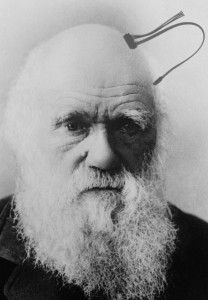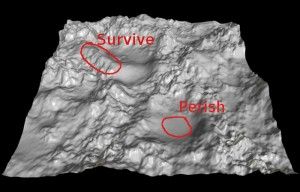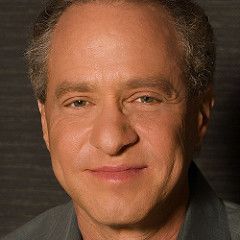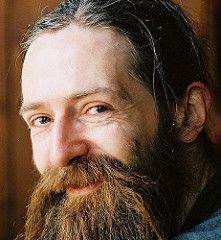I have been asked to mention the following.
The Nature of The Identity — with Reference to Androids
The nature of the identity is intimately related to information and information processing.
The importance and the real nature of information is only now being gradually realised.
But the history of the subject goes back a long way.
In ancient Greece, those who studied Nature – the predecessors of our scientists – considered that what they studied – material reality – Nature – had two aspects – form and substance.
Until recent times all the emphasis was on substance — what substance(s) subjected to sufficient stress would transmute into gold; what substances in combination could be triggered into releasing vast amounts of energy – money and weapons – the usual Homo Sap stuff.
You take a block of marble – that is substance. You have a sculptor create a beautiful statue from it – that is form.
The form consists of the shapes imposed by the sculptor; and the shapes consist of information. Now, if you were an unfeeling materialistic bastard you could describe the shapes in terms of equations. And if you were an utterly depraved unfeeling materialistic bastard you could have a computer compare the sets of equations from many examples to find out what is considered to be beauty.
Dr Foxglove – the Great Maestro of Leipzig, is seated at the concert grand — playing on a Steinway (of course) with great verve, (as one would expect). In front of him, under a low light, there is a sheet of paper with black marks – information of some kind – the music for Chopin’s Nocturne Op. 9, no. 2.
Aahh! Wonderful.
Sublime….
But … all is not as it seems….
Herr Doktor Foxglove thinks he is playing music.
A grand illusion my friend! You see, the music – it is, how you say — all in the heads of the listeners.
What the Good Doktor is doing, and doing manfully — is operating a wooden acoustic-wave generator – albeit very skilfully, and not just any old wooden acoustic-wave generator – but a Steinway wooden acoustic-wave generator.
There is no music in the physical world. The acoustic waves are not music. They are just pressure waves in the atmosphere. The pressure waves actuate the eardrum. And that in turn actuates a part of the inner ear called the cochlea. And that in turn causes streams of neural impulses to progress up into the higher brain.
Dr Foxglove hits a key on the piano corresponding to 440 acoustic waves per second; this is replicated in a slightly different form within the inner ear, until it becomes a stream of neural impulses….
But what the listener hears is not 440 waves or 440 neural impulses or 440 anything – what the listener hears is one thing – a single tone.
The tone is an exact derivative of the pattern of neural impulses. There are no tones in physical reality.
Tones exist only in the experience of the listener – only in the experience of the observer.
And thanks to some fancy processing not only will the listener get the illusion that 440 cycles per second is actually a “tone” – but a further illusion is perpetrated – that the tone is coming from a particular direction, that what one is hearing is Dr. Foxglove at the Steinway, over there, under the lights – that is where the sound is.
But no, my friend….
What the listener is actually listening to is his eardrums. He is listening to a derivative of a derivative … of his eardrums rattling.
His eardrums are rattling because someone is operating an acoustic wave generator in the vicinity.
But what he is hearing is pure information.
And as for the music ….
A single note – a tone – is neither harmonious nor disharmonious in itself. It is only harmonious or disharmonious in relation to another note.
Music is derived from ratios – a still further derivative — and ratios are pure information.
Take for example the ratio of 20 Kg to 10 Kg.
The ratio of 20 Kg to 10 Kg is not 2 Kg.
The ratio of 20 Kg to 10 Kg is 2 – just 2 – pure information.
20 kg/10 kg = 2.
Similarly, we can also show that there is no colour in reality, there are no shapes in reality; depth perception is a derivative – and just as what one is listening to is the rattling of one’s eardrums – so what one is watching is the inside of one’s eyeballs – one is watching the shuddering impact of photons on one’s retina.
The sensations of sound, of light and colour and shapes are all in one’s mind – as decodings of neural messages – which in turn are derivatives of physical processes.
The wonderful aroma coming from the barbecue is all in one’s head.
There are no aromas or tastes in reality – all are conjurations of the mind.
Like the Old Guy said, all is maya, baby….
The only point that is being made here is that Information is too important a subject to be so neglected.
What you are doing here is at the leading edge beyond the leading edge and in that future Information will be a significant factor.
What we away back in the dim, distant and bewildered early 21st Century called Information Technology (I.T.) will be seen as Computer Technology (CT) which is all it ever was – but there will be a real IT in the future.
Similarly what has been referred to for too long as Information Science will be seen for what it is — Library Technology.
Now – down to work.
One of the options – the android – is to upload all stored data from a smelly old bio body to a cool Designer Body (DB).
This strategy is based on the unproven but popular belief that one’s identity is contained by one’s memory.
There are two critical points that need to be addressed.
The observer is the cameraman — not the picture. Unless you are looking in a mirror or at a film of yourself, then you are the one person who will not appear in your memory.
There will be memories of that favourite holiday place, of your favorite tunes, of the emotions that you felt when … but you will only “appear” in your memories as the point of observation.
You are the cameraman – not the picture.
So, we should view with skepticism ideas that uploading the memory will take the identity with it.
If somebody loses their memory – they do not become someone else – hopping and skipping down the street,
‘Hi – I’m Tad Furlong, I’m new in town….’
If somebody loses their memory – they may well say – ‘I do not know my name….’
That does not mean they have become someone else – what they mean is ‘I cannot remember my name….’
The fact that this perplexes them indicates that it is still the same person – it is someone who has lost their name.
If a person changes their name they do not become someone else; nor do they become someone else if they can’t remember their name – or as it is more commonly, and more dramatically, and more loosely put – “cannot remember who they are”.
So, what is the identity?
There is the observer – whatever that is – and there are observations.
There are different forms of information – visual, audible, tactile, olfactory … which together form the environment of the observer. By “projection” the environment is observed as being external. The visual image from one eye is compared with that of the other eye to give depth perception. The sound from one ear is compared with that from the other ear to give surround sound. You are touched on the arm and immediately the tactile sensation – which actually occurs in the mind, is mapped as though coming from that exact spot on your arm.
You live and have your being in a world of sensation.
This is not to say that the external world does not exist – only that our world is the world “inside” – the place where we hear, and see, and feel, and taste….
And all those projections are like “vectors” leading out from a projection spot – a locus of projection – the 0,0 spot – the point which is me seeing and me tasting and me hearing and me scenting even though through the magic of projection I have the idea that the barbeque smells, that there is music in the piano, that the world is full of color, and that my feet feel cold.
This locus of projection is the “me” –it is the point of observation, the 0,0 reference point. This, the observer not the observation, is the identity … the me, the 0,0.
And that 0,0 may be a lot easier to shift than a ton and a half of squashed memories. Memories of being sick; of being tired; of the garden; of your dog; of the sound of chalk on the blackboard, of the humourless assistant bank manager; of the 1982 Olympics; of Sadie Trenton; of Fred’s tow bar; and so on and on and on –
So – if memory ain’t the thing — how do we do it … upload the identity?
(To be continued)



 The summer 2010 “
The summer 2010 “ Also speaking at the H+ Summit @ Harvard is
Also speaking at the H+ Summit @ Harvard is 